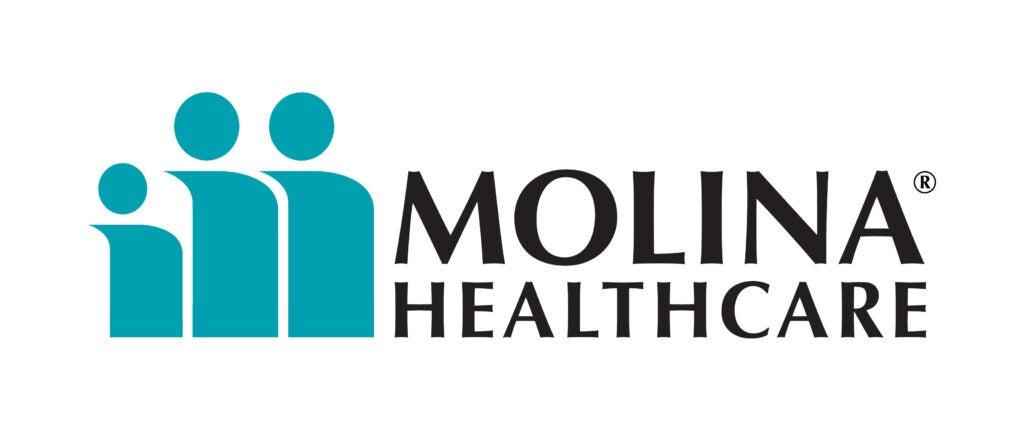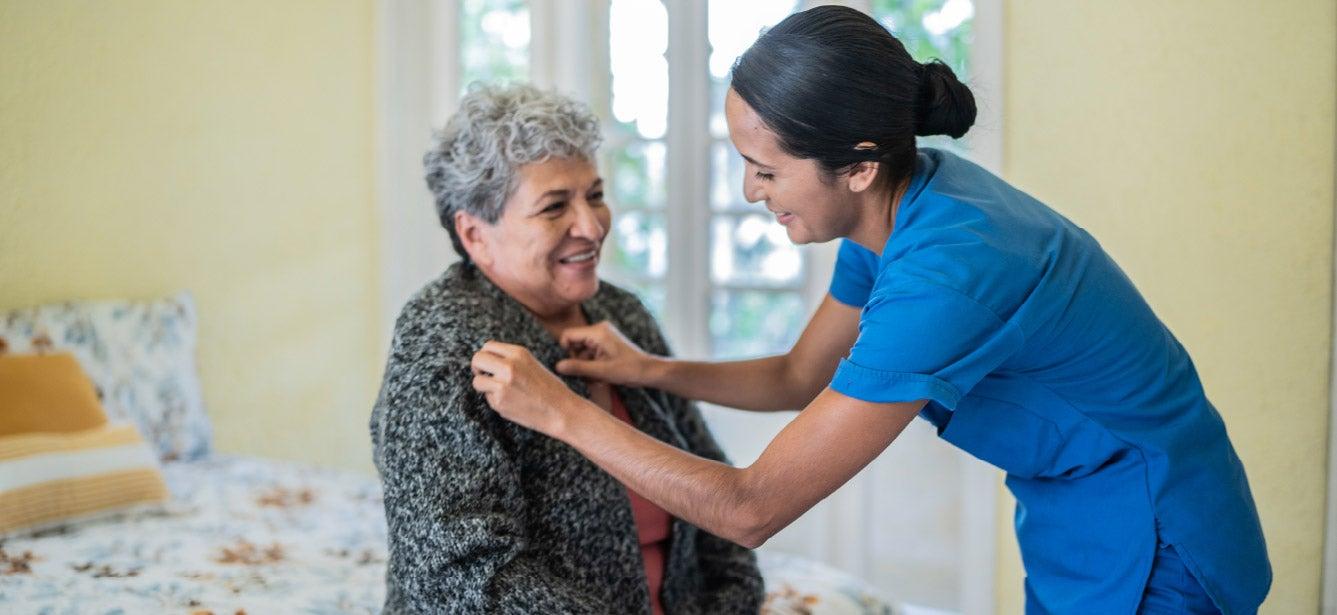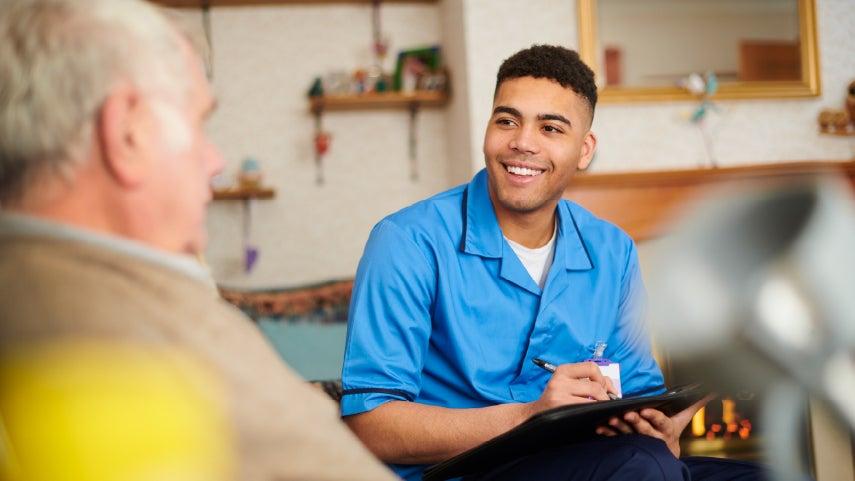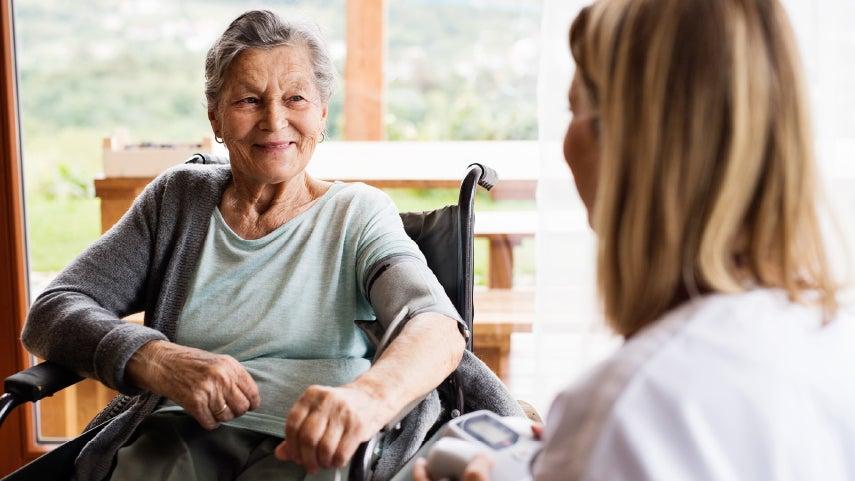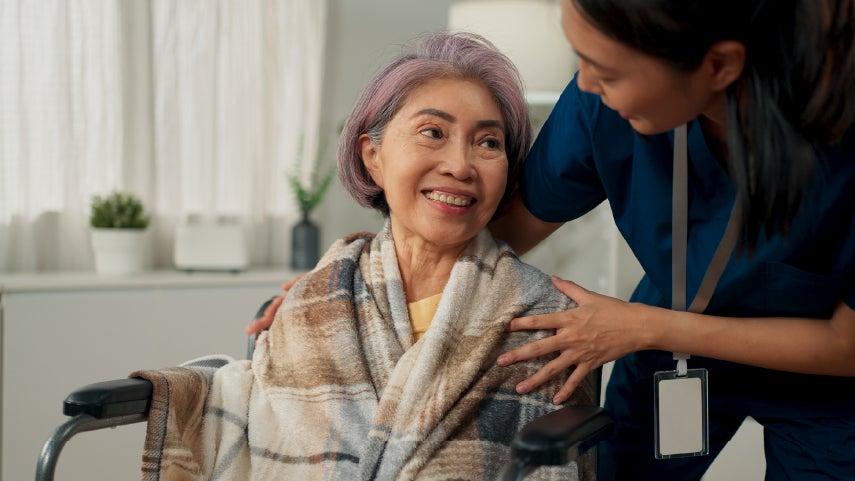
As a caregiver for a family member, you give so much of yourself every day. The support and companionship you provide help that person age with dignity and live as productive a life as possible. You cherish the close bond you share and those small moments of connection and appreciation. If you had to do it all over again, you would.
But there’s another side to the caregiving coin, too. You may face physical exhaustion along with sleep problems, poor diet, and lack of exercise. You may neglect your own health care needs. Your daily duties likely leave you little time for nurturing social connections, which can lead to a sense of social isolation and loneliness. According to Family Caregiver Alliance, roughly 20% of caregivers suffer from depression—and that's a conservative estimate.1
Over time, the pressures of caregiving can lead to burnout, which can have harmful consequences for both you and the person you care for. That’s where respite care comes in.
What is respite care?
Respite care provides temporary relief for you as the primary caregiver while ensuring your care recipient continues to receive what they need. It gives you the opportunity to take a well-deserved break from your duties—whether it’s for a few hours, a day, or even longer. You can use this time to manage personal tasks, visit other family and friends, travel, or simply rest and look after your own well-being. Respite care can be planned in advance or arranged in emergency situations, depending on your needs.
There are different types of respite care:
- Informal respite care: If you’re fortunate enough, family members, friends, or neighbors can step in to care for your relative for short periods—either for no cost or a small fee.
- In-home respite care: With this type of care, a professional caregiver comes to the home, allowing your family member to stay comfortably in their own environment. Professional caregivers may work for a home care agency, or they may work independently.
- Adult day centers: These centers offer a safe and engaging place for your care recipient to stay during the day while you manage other responsibilities. These facilities may be standalone or located within senior centers or other community-based organizations. At an adult day center, your family member can get personal assistance and supervision as well as social and recreational activities, meals, and certain health services. Typical participants are adults with mild to moderate dementia or a chronic condition or physical disability requiring assistance with at least one activity of daily living and medication management.
- Residential or facility-based respite care: Short-term, overnight stays are usually available in assisted living or nursing home facilities. This may be a good option if you need respite care for several days or longer—for example, if you’re going out of town for a wedding.
What happens at respite care?
Respite care services vary widely, and the scope of services provided depends on the needs of you and your family member. In addition to companionship, both informal and professional caregivers can help out with:
- Household tasks like meal preparation, laundry, and cleaning
- Medication management
- Transportation to and from medical appointments
- Personal care tasks like dressing, bathing, and toileting
Professionally trained caregivers cannot provide complex medical care, but they may perform basic tasks like wound care and monitoring vital signs.
How can respite care help family caregivers?
Respite care is a valuable tool for managing the ongoing physical and emotional requirements of caregiving. Below are some of the key benefits of respite care:
- Physical and emotional relief: If you feel drained and “burnt out” from the 24/7 demands of caregiving, respite care gives you a time-out to just breathe, relax, and reset.
- Opportunity for self-care: Respite care frees up time to manage your own needs—such as household tasks, medical appointments, and errands. You can address other family needs that may have taken a back burner because of caregiving. You can also use this time to sleep, meet friends to socialize over coffee, go to the gym, or participate in your favorite hobbies. Having a few uninterrupted hours to focus just on you can be very restorative.
- Better caregiving: After resting and recharging your batteries, you can return to your caregiving duties with a fresh batch of patience, energy, and attentiveness. You may even find you have a new appreciation for your role.
Who is respite care best suited for?
Respite care is valuable if you’re providing daily support to an older adult or someone with a disability or chronic health condition. Particularly if you’re juggling other responsibilities, such as work and children, occasional or regular respite care can give you the flexibility to maintain a healthier balance.
Respite care is also useful in situations where you need short-term help, such as during medical treatments or recovery periods, or if you have to go out of town for leisure or business.
Who pays for respite care?
The cost of respite care varies based on the level, duration, and location of care. Most respite services are paid for out of pocket by the care recipient or caregiver.
While cost is a concern, there are many options worth exploring to help cover some or all of these expenses:
- Medicare: With original Medicare, respite care is only covered under the Part A hospice benefit for end-of-life pain management and comfort care for those with a terminal illness.
Some Medicare Advantage (Part C) plans offer supplemental benefits that include respite care as a value-added service—so be sure to check with your family member’s plan provider. - Long-term care insurance: If your family member has long-term care insurance, respite care may be covered by their policy benefits.
- Veteran benefits: If the person you care for receives Department of Veterans Affairs (VA) benefits, they may qualify for up to 30 days of respite care in a VA facility. They may also be eligible for coverage through VA Aid and Attendance or Housebound benefits.
The VA also offers a caregiver education, services, and support program that can help reduce the burden and expense of caregiving. - Non-profit assistance programs: Some national, state, and local programs offer respite care services at no cost (or financial support for caregivers). Funding may be available through the National Family Caregiver Support Program, which is administered through your local Area Agency on Aging (AAA). You can also visit the Family Caregiver Alliance website to search for state-funded family caregiver support or respite programs in your area.
- Medicaid: While respite care is not a standard Medicaid benefit, your family member’s state may have a waiver program that includes some coverage for this type of care. However, they must first qualify for Medicaid. In addition, eligibility requirements vary by state, and coverage may be limited.
- Your health plan: If you have private health insurance through your employer, contact the plan provider to see if your plan offers any supplemental benefits for caregivers. It’s also a good idea to check with your employer directly to see if they offer an Employee Assistance Program (EAP) that includes caregiver-related benefits.
Where do I find respite care services?
These sources can help you find quality respite care services:
- Friends and family: If your support network is able and willing to help, friends and family are a great place to find informal respite care. Knowing your family member is with someone you trust will give you peace of mind while you take a break. Friends and family may also be able to help you find private duty nurses, certified nursing assistants, or professional caregivers who can provide in-home respite services, typically for an hourly fee.
- Health care providers: Check with your relative’s health care team for respite care service referrals.
- Centers for Independent Living: Available in most communities across the U.S., these organizations maintain a list of personal care attendants who can provide in-home respite services.
- National Adult Day Services Association: This association provides a step-by-step guide to choosing an adult day center that’s right for your care recipient. Their website also includes a nationwide center locator, searchable by ZIP code.
- ARCH: The ARCH National Respite Network and Resource Center offers a convenient online National Respite Locator Service.
- Area Agency on Aging: Find and contact your local AAA to learn about reputable respite care providers in your area.
Taking a pause from caregiving may feel like a luxury—and feelings of guilt can creep in. But remind yourself you're not doing anything wrong by seeking respite care.
“Don’t get caught up on the idea that you’re letting the person you care for down,” said Kathleen Cameron, former Senior Director of NCOA’s Center for Healthy Aging.
The truth is you can’t pour from an empty cup. Taking of yourself is a necessity that will help you be fully present for your family member and provide the best care possible,” Cameron said.
Interested in becoming a professional caregiver?
With a growing aging population, compassionate and skilled caregivers are in short supply. According to the U.S. Bureau of Labor Statistics, demand for home health and personal care aides is expected to grow by 21% through 2033—much faster than the average for other occupations.2
If you can see yourself making a difference in people's lives as a caregiver, reach out to your local community college or job training organization to ask about available training opportunities.
Sources
1. Family Caregiver Alliance. Caregiver Depression: A Silent Health Crisis. Found on the internet at https://www.caregiver.org/resource/caregiver-depression-silent-health-crisis/
2. U.S. Bureau of Labor Statistics - Occupational Outlook Handbook. Home Health and Personal Care Aides. Found on the internet at https://www.bls.gov/ooh/healthcare/home-health-aides-and-personal-care-aides.htm

